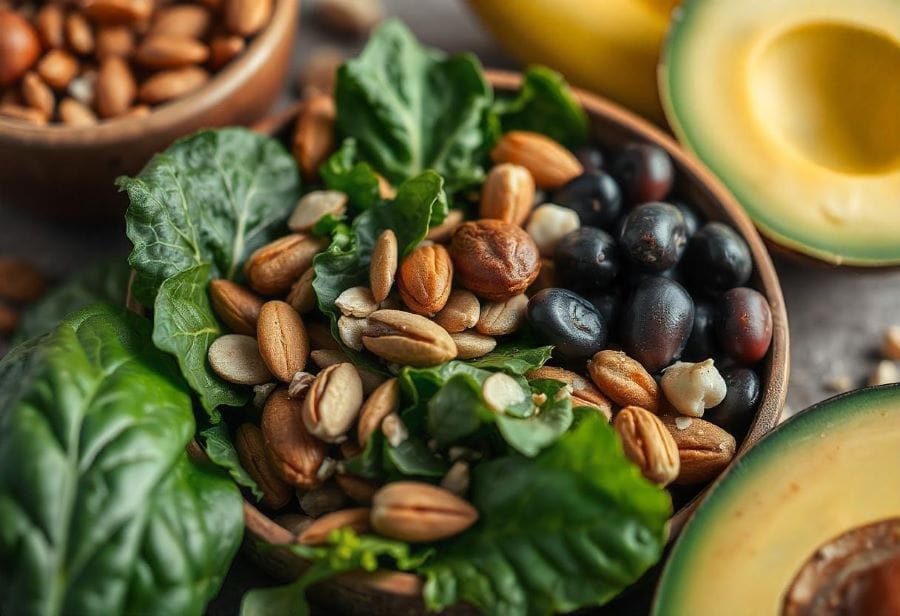Introduction
Magnesium is a vital mineral that plays a key role in numerous bodily functions, yet it’s often overlooked in our daily nutrition. From supporting bone health to ensuring proper muscle and nerve function, magnesium is essential for overall wellness. Despite its importance, many people fall short of meeting their daily magnesium needs, which can lead to a range of health issues, including fatigue, muscle cramps, and even heart problems.
This is where magnesium rich foods come into play. These nutrient-packed options not only help you meet your daily magnesium requirements but also provide other essential vitamins and minerals that contribute to a balanced diet. Incorporating these foods into your meals can be a simple yet effective way to improve your overall health and energy levels.
Understanding the benefits of magnesium rich foods is the first step toward optimizing your diet for better health. Whether you’re looking to enhance your bone strength, improve sleep quality, or reduce stress, magnesium-rich choices like leafy greens, nuts, and whole grains can make a significant difference.
In this ultimate guide, we’ll explore what makes magnesium so crucial, highlight the top magnesium rich foods, and share practical tips for including them in your daily meals. By the end, you’ll have all the tools you need to make magnesium a staple in your diet and reap the many health benefits it offers.
Affiliate Disclaimer
This blog post may include links to affiliate sites. If you click on an affiliate link and make a purchase, we may earn a small commission or receive other compensation at no extra cost to you. Please note that many of the links on our site are affiliate links. Our use of these links does not impact the products, services, or websites we recommend to you. This disclaimer covers all forms of communication with you, including our website, email, phone, social media, products, and other platforms.
Amazon Affiliate Disclaimer
We participate in the Amazon Services LLC Associates Program, an affiliate marketing program that allows us to earn fees by linking to Amazon.com and its affiliated sites. If you click on an Amazon affiliate link on our site and make a purchase, we may receive a small commission at no additional cost to you.
1. What Are Magnesium Rich Foods?
Magnesium is a vital mineral required by the body to perform numerous functions, including maintaining muscle and nerve health, supporting energy production, and regulating blood pressure. While magnesium supplements are an option, obtaining this nutrient naturally through magnesium rich foods is a healthier and more sustainable approach.
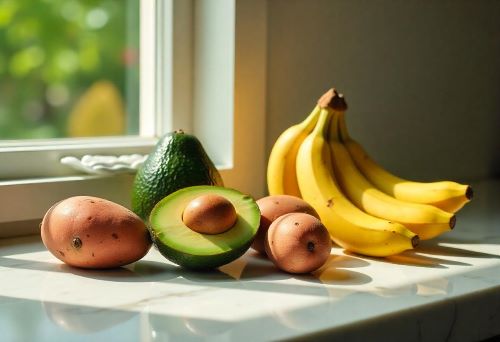
1.1. What Makes a Food Magnesium Rich?
Foods high in magnesium typically fall into one or more of the following categories: plant-based, whole, and minimally processed. Magnesium is found naturally in many foods, particularly those that also provide other vital nutrients like fiber, vitamins, and antioxidants.
Examples of magnesium-rich foods include leafy greens, nuts, seeds, legumes, and whole grains. These foods not only supply magnesium but also contribute to overall wellness with their rich profiles of other essential nutrients.
1.2. Benefits of Choosing Magnesium Rich Foods
Incorporating magnesium rich foods into your diet is one of the best ways to boost your magnesium intake while enjoying additional health benefits. For instance, foods like spinach and kale are also high in vitamin K and calcium, supporting bone health, while nuts and seeds provide healthy fats that benefit heart and brain health.
Foods containing magnesium are also a source of dietary fiber, which aids digestion and helps maintain healthy cholesterol levels. Choosing these nutrient-packed options is a natural way to manage magnesium levels without relying solely on supplements.
1.3. Examples of Magnesium Rich Foods
Magnesium rich foods come in a variety of types, making it easy to incorporate them into your meals regardless of your dietary preferences. Some top examples include:
- Leafy Greens: Spinach, kale, and Swiss chard are among the best plant-based sources of magnesium.
- Nuts and Seeds: Almonds, cashews, and pumpkin seeds offer a magnesium boost and make for great snacks.
- Legumes: Lentils, chickpeas, and black beans are not only magnesium-rich but also a source of protein.
- Whole Grains: Quinoa, oatmeal, and brown rice are excellent options to round out a magnesium-rich diet.
- Fruits and Vegetables: Avocados, bananas, and sweet potatoes provide magnesium along with a variety of other essential nutrients.
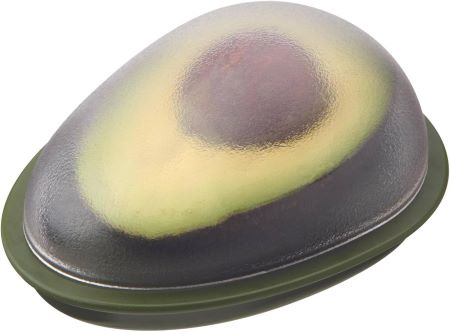
1.4. How to Identify Magnesium Rich Foods in Your Diet
When planning meals, consider including foods that are both versatile and rich in magnesium. For example, roasted pumpkin seeds make an easy snack, while quinoa can serve as a base for salads or as a side dish. Additionally, dark leafy greens can be added to smoothies, soups, or stir-fries, providing a quick magnesium boost.
By understanding what constitutes magnesium rich foods and their wide variety, you can take simple steps to ensure your diet includes this essential mineral naturally and deliciously.
2. Why Is Magnesium Important for Your Health?
Magnesium is an essential mineral that plays a critical role in maintaining optimal health. Found in every cell of the body, magnesium is involved in more than 300 enzymatic reactions, influencing everything from energy production to muscle and nerve function. Incorporating magnesium rich foods into your diet is one of the most effective ways to ensure your body receives the magnesium it needs to thrive.

2.1. Key Functions of Magnesium in the Body
Magnesium is a true multitasker, contributing to several key bodily processes:
- Bone Health: Magnesium works alongside calcium and vitamin D to strengthen bones and improve bone density, reducing the risk of osteoporosis. Consuming magnesium rich foods like leafy greens and nuts supports this process.
- Muscle and Nerve Function: Magnesium helps regulate muscle contractions and nerve signals, preventing cramps, spasms, and irregular nerve activity. Foods high in magnesium can help reduce the likelihood of muscle fatigue and tension.
- Energy Production: Magnesium is vital for converting the food you eat into usable energy. It assists in breaking down carbohydrates, fats, and proteins, ensuring your body has the fuel it needs to perform daily tasks.
2.2. Signs of Magnesium Deficiency
Magnesium deficiency can lead to a variety of symptoms and, if left unaddressed, can contribute to serious health issues. Common signs include:
- Fatigue or low energy levels
- Muscle cramps or spasms
- Difficulty sleeping or frequent insomnia
- Nausea or loss of appetite
- Irritability or mood swings
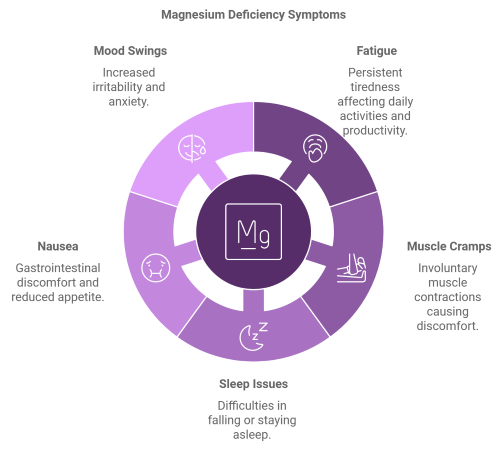
Chronic deficiency may increase the risk of conditions like high blood pressure, heart disease, type 2 diabetes, and migraines. Adding magnesium rich foods to your diet is a proactive way to avoid these complications and maintain overall wellness.
2.3. The Role of Magnesium in Stress and Sleep
Magnesium also plays a crucial role in managing stress and promoting better sleep. It helps regulate the production of neurotransmitters like serotonin, which affects mood and relaxation. Additionally, magnesium helps activate the parasympathetic nervous system, which is responsible for calming the body and preparing it for restful sleep. Foods like bananas, avocados, and almonds are excellent magnesium-rich options to incorporate into an evening snack or dinner.
2.4. Why You Should Prioritize Magnesium Rich Foods
The benefits of magnesium are wide-ranging, and prioritizing magnesium rich foods ensures that you’re not only meeting your magnesium requirements but also enjoying the additional nutritional advantages these foods provide. Unlike supplements, whole foods deliver magnesium alongside other essential nutrients such as fiber, antioxidants, and healthy fats.
Eating magnesium rich foods regularly can help prevent deficiencies, support a strong immune system, and improve your overall quality of life. With options ranging from legumes and grains to leafy greens and seeds, incorporating these foods into your meals can be simple and satisfying.
By understanding the importance of magnesium and focusing on magnesium rich foods, you’re taking a vital step toward better health, enhanced energy, and a more balanced lifestyle.
3. Top Magnesium Rich Foods to Include in Your Diet
Adding magnesium rich foods to your meals is an effective way to meet your daily magnesium needs while enjoying a wide range of other health benefits. From leafy greens to whole grains, these foods are not only nutritious but also versatile, making it easy to incorporate them into a variety of dishes. Here’s a closer look at the top magnesium-rich options and why they should be part of your diet.
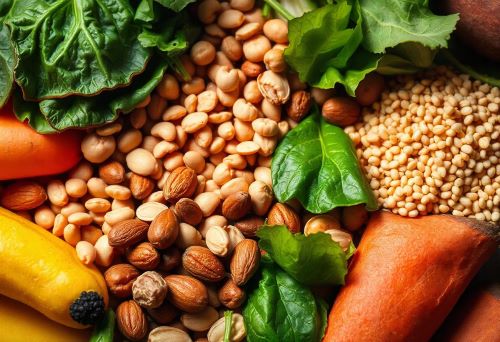
3.1. Nuts and Seeds
Nuts and seeds are among the most convenient and portable magnesium rich foods. They are perfect as a snack or an ingredient in recipes.
- Almonds and Cashews: A handful of these nuts can provide a significant portion of your daily magnesium needs. They’re also rich in healthy fats and protein, making them an excellent choice for a balanced diet.
- Pumpkin and Sunflower Seeds: These tiny seeds pack a powerful magnesium punch. Sprinkle them on salads, add them to yogurt, or enjoy them as a crunchy snack.
3.2. Leafy Green Vegetables
Leafy greens are a standout group of magnesium rich foods. They are low in calories but loaded with nutrients.
- Spinach: One of the most magnesium-dense greens, spinach can be added to smoothies, soups, or sautéed as a side dish.
- Kale and Swiss Chard: These greens are also rich in magnesium and are great in salads, stir-fries, or as a hearty addition to wraps.
3.3. Whole Grains
Whole grains are not only a staple of many diets but are also rich sources of magnesium.
- Quinoa: Known as a superfood, quinoa is high in magnesium and other nutrients like protein and fiber. Use it as a base for salads or as a side dish.
- Brown Rice and Oats: These grains provide a steady release of energy while contributing to your magnesium intake. Enjoy them in breakfast bowls or alongside your favorite proteins.
3.4. Legumes
Legumes are an excellent plant-based source of magnesium, protein, and fiber.
- Black Beans and Lentils: These legumes are versatile and can be used in soups, stews, or salads. They are also great for heart health.
- Chickpeas: A key ingredient in hummus, chickpeas offer a delicious way to increase your magnesium consumption.
3.5. Fish and Seafood
Certain types of fish are magnesium rich foods that also provide heart-healthy omega-3 fatty acids.
- Salmon and Mackerel: These fatty fish are high in magnesium and are great grilled, baked, or added to salads.
- Tuna: A versatile option, tuna is perfect for sandwiches, wraps, or casseroles.
3.6. Fruits and Vegetables
Fruits and vegetables add variety and flavor to your magnesium-rich diet.
- Avocados: This creamy fruit is not only a great source of magnesium but also provides healthy fats.
- Bananas and Sweet Potatoes: Both are nutrient-rich, versatile, and excellent for adding natural sweetness to your meals.
Including magnesium rich foods in your diet doesn’t have to be complicated. With so many options to choose from, you can enjoy a balanced and delicious approach to meeting your magnesium needs.
4. How to Add More Magnesium Rich Foods to Your Diet
Incorporating magnesium rich foods into your daily diet can be both simple and enjoyable. With a variety of options available, from leafy greens to seeds, it’s easy to create meals that are both nutritious and flavorful. Below are practical tips and creative ideas to make magnesium a central part of your diet.
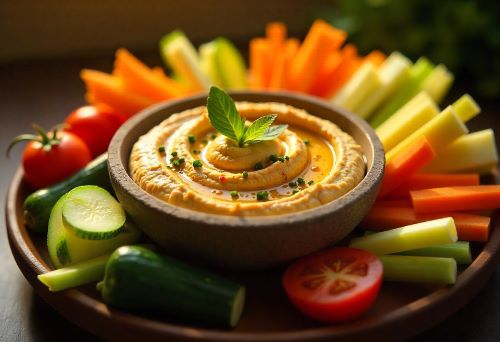
4.1. Easy Recipes Featuring Magnesium Rich Ingredients
Magnesium rich foods can shine in a range of recipes, making them a delicious addition to your meals.
- Smoothie Bowls: Start your day with a smoothie packed with spinach, bananas, and almond milk. Add toppings like pumpkin seeds and chia seeds for a crunchy magnesium boost.
- Stir-Fries: Incorporate magnesium-rich greens like kale or Swiss chard, along with tofu, chickpeas, or cashews for added nutrition.
- Whole Grain Salads: Use quinoa or brown rice as a base, then mix in avocado, black beans, and sunflower seeds for a magnesium-packed meal.
4.2. Snack Ideas for a Magnesium Boost
Snacking is an excellent opportunity to include magnesium rich foods throughout the day.
- Trail Mix: Combine almonds, cashews, pumpkin seeds, and dried fruit for an energy-boosting snack.
- Vegetable Sticks with Hummus: Pair raw vegetables like carrots or celery with hummus, made from chickpeas, to sneak in some magnesium.
- Avocado Toast: Spread mashed avocado on whole-grain bread and top with sunflower seeds for a quick and satisfying snack.
4.3. Tips for Meal Planning with Magnesium Rich Foods
Planning your meals ahead of time ensures that magnesium rich foods are consistently included in your diet.
- Grocery List Strategy: Add staples like leafy greens, nuts, seeds, whole grains, and legumes to your weekly shopping list. These foods are versatile and can be used in various dishes.
- Batch Cooking: Prepare large portions of magnesium-rich dishes like quinoa salads, bean stews, or roasted vegetables to enjoy throughout the week.
- Balanced Plates: Aim to include at least one magnesium-rich food in every meal. For example, add spinach to omelets at breakfast, chickpeas to salads at lunch, and quinoa as a side at dinner.
4.4. Creative Ways to Sneak in Magnesium Rich Foods
Sometimes, it’s easier to include magnesium in your diet by blending it into everyday meals.
- Add Greens to Soups: Toss a handful of spinach or kale into soups and broths for an easy magnesium boost.
- Enhance Baked Goods: Mix ground flaxseeds or almond flour into muffins, pancakes, or breads for added magnesium.
- Swap Refined Grains for Whole Grains: Replace white rice with brown rice or pasta with quinoa to naturally increase your magnesium intake.
Adding magnesium rich foods to your diet doesn’t require a complete overhaul of your eating habits. By integrating them into snacks, meals, and even desserts, you can enjoy the health benefits of magnesium in a way that suits your taste and lifestyle. With a little planning and creativity, boosting your magnesium intake can be both fun and rewarding.
5. How Much Magnesium Do You Need Daily?
Understanding how much magnesium your body requires daily is essential for maintaining optimal health. While individual needs may vary depending on factors like age, gender, and activity level, consuming the recommended amount through a balanced diet rich in magnesium rich foods is both achievable and beneficial.
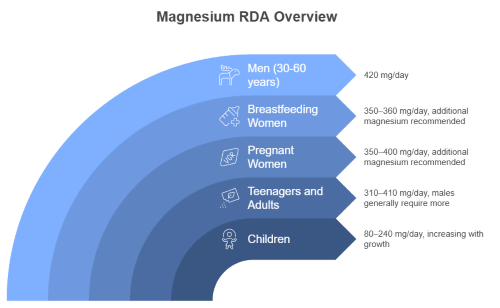
5.1. Recommended Dietary Allowance (RDA) for Magnesium
The RDA for magnesium is set to provide guidance on the amount needed to support key bodily functions. These values are based on age, gender, and life stage:
- Children (1–13 years): 80–240 mg/day, increasing as they grow.
- Teenagers and Adults (14–30 years): 310–410 mg/day, with males generally requiring more due to higher muscle mass.
- Pregnant and Breastfeeding Women: Additional magnesium is recommended, with RDAs ranging from 350–400 mg/day.
Meeting these recommendations can easily be accomplished by regularly including magnesium rich foods like nuts, seeds, and leafy greens in your diet.
RDA for Magnesium (Ages 30–60):
- Men: 420 mg/day
- Women: 320 mg/day
- Pregnant Women: 350–360 mg/day
- Breastfeeding Women: 310–320 mg/day
5.2. Benefits of Meeting Your Magnesium Needs
Ensuring adequate magnesium intake supports several critical bodily functions, including:
- Energy Production: Magnesium aids in converting food into energy, keeping you active and focused.
- Bone Health: By supporting calcium absorption, magnesium contributes to stronger bones and reduces the risk of osteoporosis.
- Heart Health: Regular intake of magnesium rich foods helps regulate blood pressure and maintain a steady heartbeat.
5.3. Risks of Overconsumption
While magnesium is crucial for health, consuming too much—especially through supplements—can lead to issues like diarrhea, nausea, or even magnesium toxicity in extreme cases. The upper limit for supplemental magnesium is 350 mg/day for most adults. It’s important to focus on magnesium rich foods, as these provide the mineral naturally and are less likely to cause adverse effects.
5.4. Tips for Balancing Magnesium Intake
Balancing your magnesium intake is about consistency and variety. Here’s how you can do it:
- Spread It Out: Include magnesium rich foods at every meal rather than trying to meet your needs in one sitting. For example, start the day with oatmeal and almonds, enjoy a spinach salad at lunch, and have quinoa with dinner.
- Listen to Your Body: If you experience symptoms of magnesium deficiency, like fatigue or muscle cramps, consider whether you’re consuming enough magnesium-rich options.
- Focus on Whole Foods: Stick to natural sources of magnesium, such as fruits, vegetables, and legumes, which also provide other nutrients essential for overall health.
5.5. Why Magnesium Rich Foods Are the Best Source
Relying on magnesium rich foods rather than supplements ensures you receive a balanced intake of nutrients. Whole foods like avocados, black beans, and sunflower seeds not only deliver magnesium but also contain fiber, vitamins, and healthy fats that supplements lack.
By understanding how much magnesium you need daily and prioritizing magnesium rich foods, you can achieve a balanced diet that supports energy, heart health, and bone strength—while minimizing the risk of overconsumption.
Conclusion
Magnesium is an essential mineral that influences a wide range of bodily functions, from supporting strong bones and muscles to maintaining energy production and heart health. Despite its importance, many people struggle to meet their daily magnesium needs, often due to dietary choices or lack of awareness. Fortunately, incorporating magnesium rich foods into your meals can provide a simple and natural solution.
Throughout this guide, we’ve highlighted the significance of magnesium and explored the variety of foods that can help you achieve your nutritional goals. By including options like leafy greens, nuts, seeds, whole grains, and legumes, you not only boost your magnesium intake but also gain access to an array of other nutrients that enhance overall health.
The beauty of magnesium rich foods lies in their versatility. Whether you’re preparing a hearty quinoa salad, snacking on almonds, or adding spinach to a smoothie, these foods can easily fit into any meal plan. Plus, they offer additional benefits, such as fiber for digestion and healthy fats for brain and heart health.
As you plan your meals, remember that magnesium rich foods are an investment in your long-term well-being. From reducing stress and improving sleep quality to supporting bone and heart health, the benefits of prioritizing magnesium in your diet are undeniable. Take the time to explore new recipes and meal ideas that feature these foods, and make magnesium a cornerstone of your healthy eating habits. Your body will thank you for it!
FAQs
1. What are the best magnesium rich foods to include in my diet?
The best options include leafy greens (spinach, kale), nuts and seeds (almonds, pumpkin seeds), legumes (black beans, lentils), whole grains (quinoa, brown rice), and fruits like bananas and avocados.
2. How much magnesium do I need daily?
The Recommended Dietary Allowance (RDA) varies by age and gender. For adults aged 30–60, men need 420 mg/day, and women need 320 mg/day. Older adults have similar requirements, while pregnant or breastfeeding women may need slightly more.
3. Can I get enough magnesium from food alone?
Yes, a balanced diet rich in whole foods can provide all the magnesium you need. Focus on incorporating a variety of magnesium rich foods into your meals and snacks.
4. What are the symptoms of magnesium deficiency?
Signs include fatigue, muscle cramps, nausea, irritability, and difficulty sleeping. Severe deficiency can lead to more serious health issues like irregular heartbeat or high blood pressure.
5. Are there risks to consuming too much magnesium?
Excess magnesium from food is rare and not harmful. However, overuse of magnesium supplements can cause side effects like diarrhea, nausea, and, in extreme cases, magnesium toxicity.
6. Are magnesium supplements necessary?
Supplements may be needed if you have a deficiency or specific medical conditions, but it's best to consult a healthcare provider first. Prioritize getting magnesium from foods whenever possible.
7. Can magnesium help with sleep and stress?
Yes, magnesium supports relaxation and helps regulate neurotransmitters involved in sleep and stress reduction. Foods like almonds, bananas, and avocados can promote better sleep and reduce stress.


